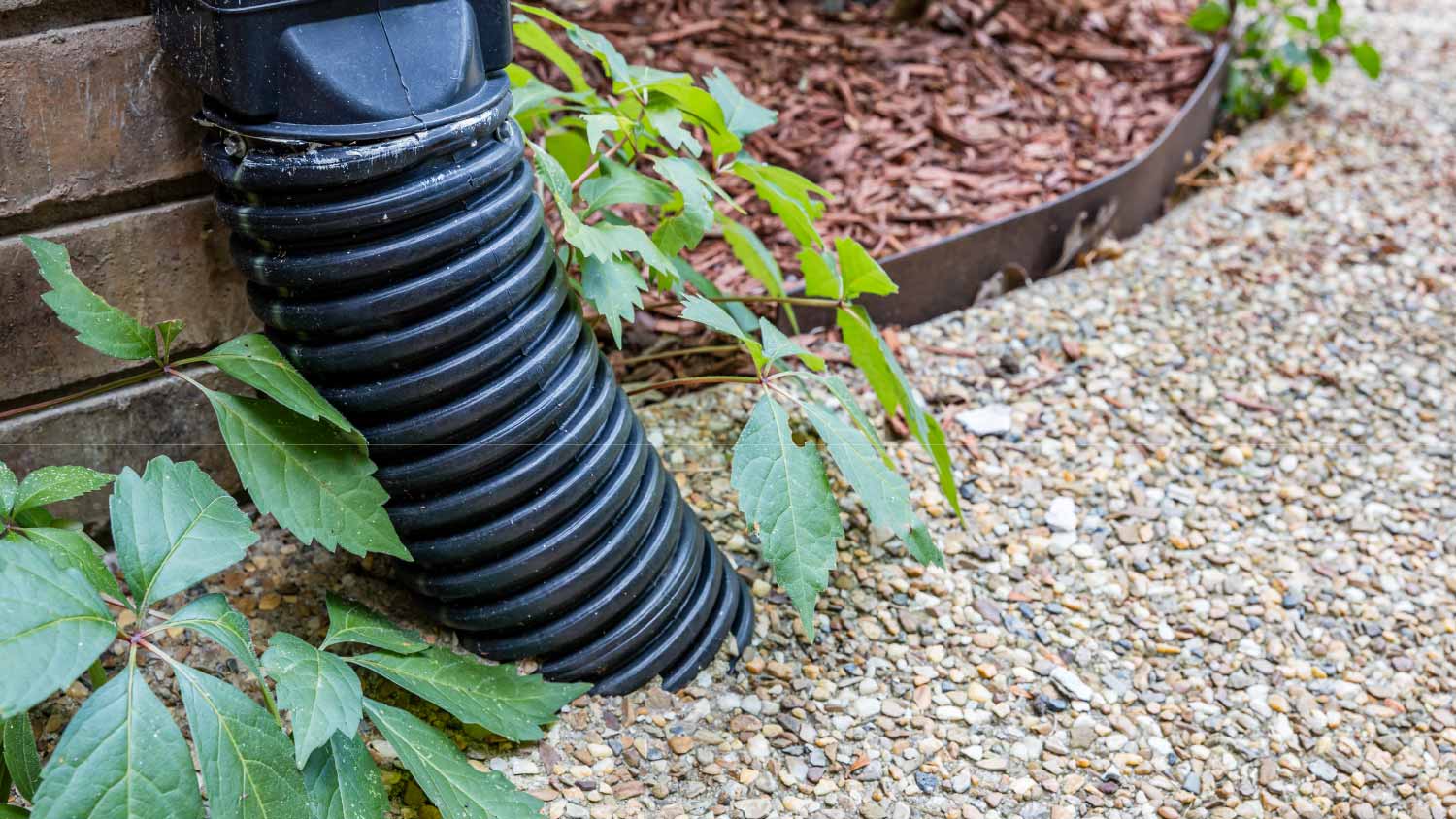How to Locate Underground Downspouts In Your Yard
All that water has to go somewhere


Whether it's rain or melting snow, water has to drain off of your home and go somewhere, preferably far away from your foundation. An underground downspout directs water away from your house, without creating unsightly puddles or risking your foundation. They can be out of sight, out of mind—until there's a problem. Here's how to locate underground downspouts in your yard and figure out where they go.
What Is a Downspout?
A downspout is a pipe that connects to the gutters around your home's roof and allows water to drain away. Some downspouts flare open at the base of your home, spilling water out onto the soil. Others extend into the ground, connecting to additional pipes that direct water away from the home.
Underground downspouts may be more aesthetically appealing than open downspouts. However, the pipes that connect to the underground downspout can become clogged, leading to leaks in the downspout itself or preventing it from doing its job. If you don't know where the downspout goes once it's underground, it can be difficult to fix the problem.
How Much Does It Cost to Install Downspouts?
The cost to install downspouts ranges from $15 to $28 per linear foot, which comes to about $30 to $75 each. However, the price depends on whether they are underground or not. The cost to install underground drainage is typically higher since it requires digging into the soil and laying pipe.
You should always hire a professional who does gutter work to ensure that the pipes lead away from your home.
Why Locate an Underground Downspout?
Knowing how to locate an underground downspout can help you uncover the source of any issues, such as clogs in the pipes or leaks. It also provides you with information about your property and can help protect you in case there are any issues with flooding.
How to Locate Underground Downspouts

You can figure out where your underground downspout goes and where it ends in a few ways, some of which are easier to do than others.
1. Use a Snake
The first option is to thread a snake into the opening of the downspout, at the base of your house. To do this, you'll need to remove a part of the downspout itself or uncover the drain that it leads into. You'll also need to have a snake that is long enough to extend all the way through the pipe, which can be difficult if you're not sure where the downspout leads.
2. Hire a Professional
Another option is to hire a local gutter professional or plumber to investigate the downspout and piping for you. A professional can run a snake or line with a camera attached to it to trace the length of the downspout and help you determine where it ends.
3. Run Water Through the Downspout
Depending on where you live, your underground downspout may drain into the street. One way to figure out where the water goes is to have someone run water into the downspout while another stands by the street and looks to see if any water comes out of a drain.
4. Start Digging
An invasive, and labor intensive, way to find your underground downspout, is to start digging. Start near the drain itself, then follow the slope away from your home.
You can also push a metal rod into the soil, along the path where you think the drain pipes are, to see if you feel the piping beneath.
Taking Care of an Underground Downspout
Like any other part of your home, an underground downspout requires ongoing maintenance to keep it at its best. Just as clogged gutters can cause foundation problems, a clogged downspout can also damage your foundation, as it allows water to collect near your home.
Every season, inspect the area around the downspout and drain at the base of your home to ensure that water isn't collecting there. You may also want to take a look at the downspout just after a storm or when snow is melting to ensure that water isn't pooling.
Gutter maintenance is also a key part of underground downspout maintenance. Clean your gutters, or hire a professional to do so, at least once a year, so that water can flow freely through them.
DIY vs. Hiring a Pro
You may wonder whether you should try to locate your underground downspouts on your own or hire a professional to do it. Often, the pros have the right equipment to make it easy to trace the pipes and determine where your downspouts lead. They also have the gear needed to clear out any clogs or repair damage to the pipes, if necessary. When in doubt, it’s best to go with your gut and call a pro.
Frequently Asked Questions
If not properly maintained, an underground downspout may damage your home's foundation. A clogged downspout can back up, causing water to pool around the base of your home and seep into the foundation. Regular inspections and maintenance keep your downspout in good working order, preventing damage and protecting your home.
If you want to replace your home's existing underground downspout, you have options. One is to connect a rain barrel to the downspout. During a storm, water travels from the downspout into the barrel. You can then use the water to irrigate your garden or lawn.
Another option is to install a downspout extension above ground. The extension will direct water away from your home, but potentially not as far away as an underground system.














